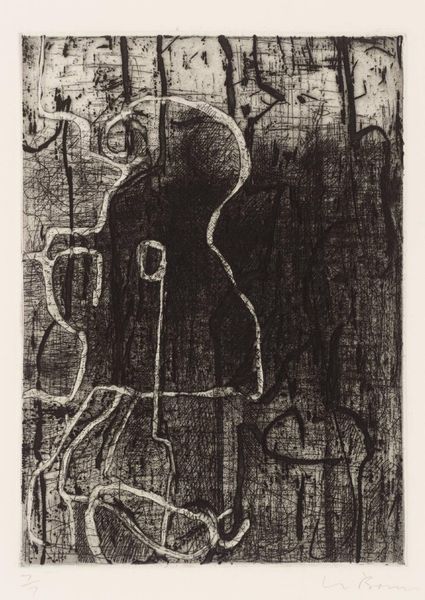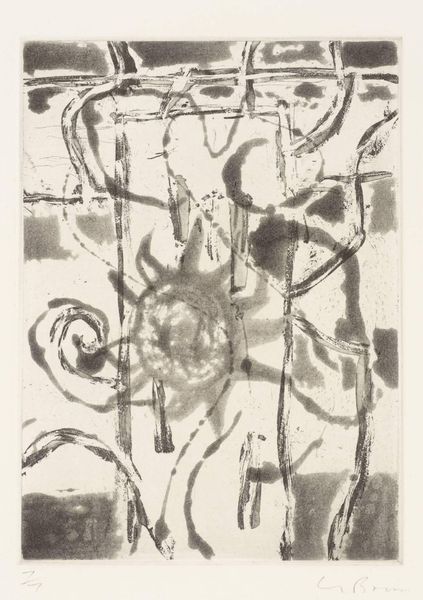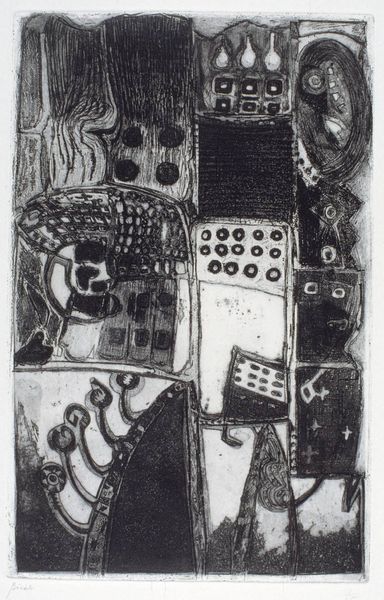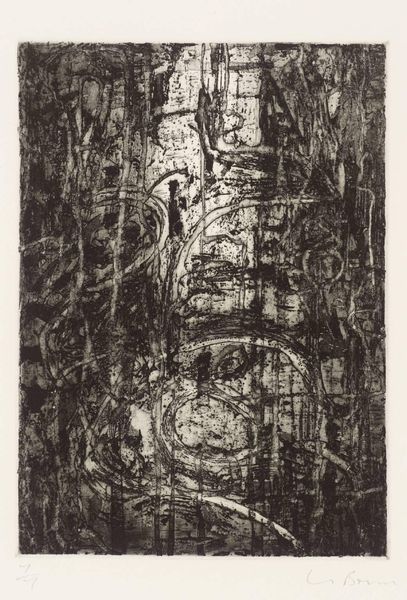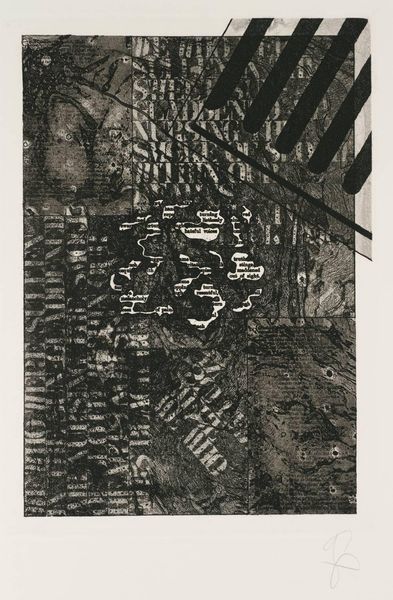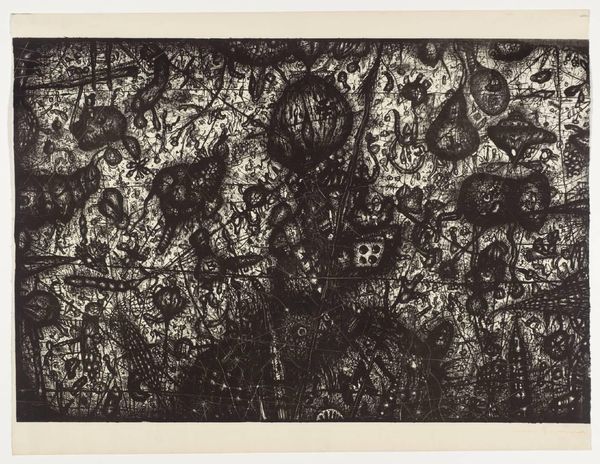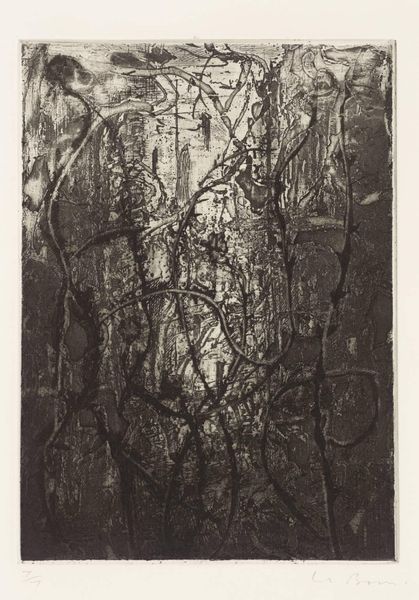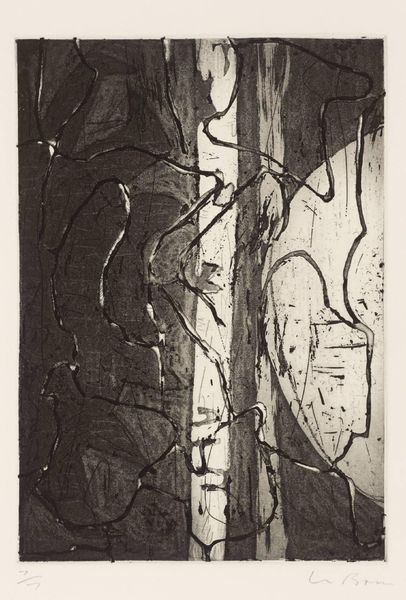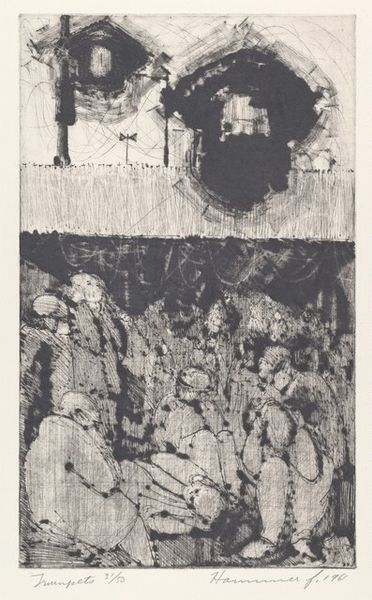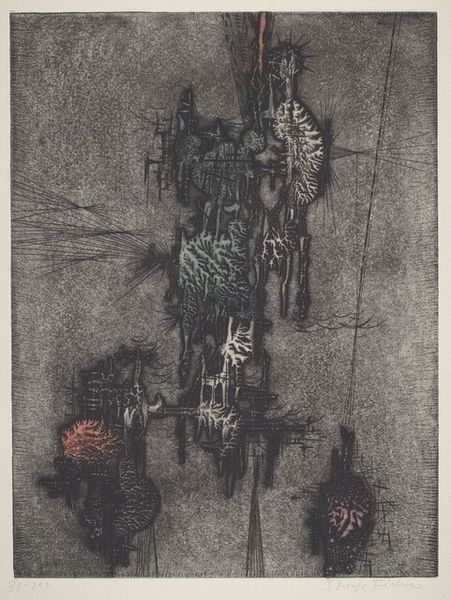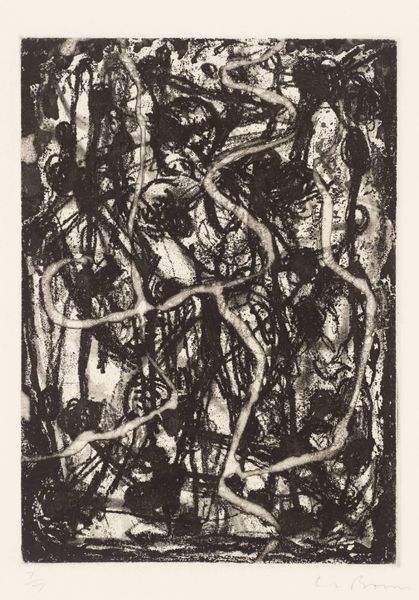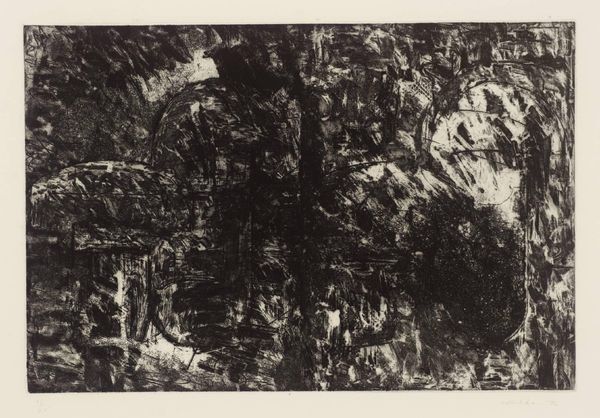
Dimensions: image: 203 x 151 mm
Copyright: © The estate of Fred Williams | CC-BY-NC-ND 4.0 DEED, Photo: Tate
Editor: Here we have Fred Williams' "Upwey Landscape No. 5," currently residing in the Tate. It's a monochromatic piece. It feels very abstract and almost chaotic in its composition. What do you see in the relationships between shapes and marks in this print? Curator: Note the stark contrast between the white negative space and the densely worked dark areas. This contrast creates a dynamic tension. The marks themselves, though seemingly random, display a deliberate pattern. The horizon line, for instance, provides a structural anchor. Editor: So, it's less random than it appears, more about calculated contrasts and structured chaos? Curator: Precisely. The interplay of light and dark, the strategic placement of forms—it all contributes to a carefully constructed visual experience. A successful use of semiotics in creating a landscape with minimal forms. Editor: It's fascinating how much structure can be found within apparent disorder. I learned a lot. Curator: Indeed, the beauty lies in the artist's control over these elements.
Comments
tate 7 months ago
⋮
http://www.tate.org.uk/art/artworks/williams-upwey-landscape-no-5-p77552
Join the conversation
Join millions of artists and users on Artera today and experience the ultimate creative platform.
tate 7 months ago
⋮
By the early 1960s, Williams had evolved a distinctive composition in which the landscape was reduced to an all-over patterning of small touches of paint evoking trees and shrubs. He moved to Upwey, in the Dandenong Ranges outside Melbourne in 1963, bringing him into the heart of the countryside. His studio there was in a valley, and the view above the surrounding trees encouraged him to raise the horizon in his compositions, leaving only a narrow band of sky at the top. Gallery label, May 2008
